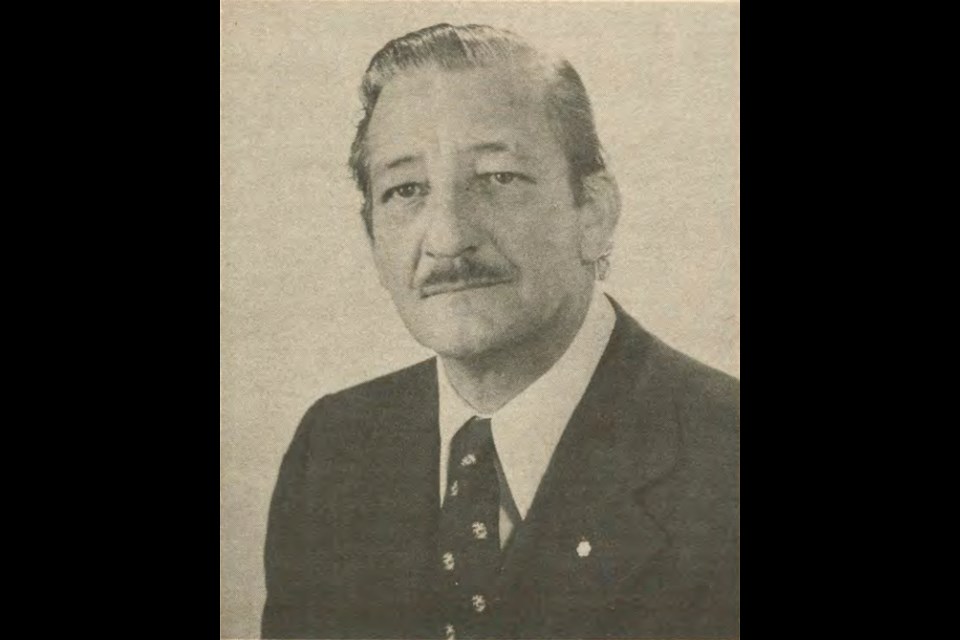Algoma University is known as Sault Ste. Marie’s own independent university, a Queen Street East landmark with several modern buildings surrounding historic Shingwauk Hall, the postsecondary institution currently enjoying unprecedented growth, aiming to have 3,000 students enrolled at its Sault Ste. Marie, Brampton and Timmins campuses by 2023.
The institution was created in 1965 as Algoma University College (AUC), affiliated with Sudbury’s Laurentian University.
AUC came into being as the result of a citizens' movement dedicated to establishing a university in Sault Ste. Marie, but many do not realize Lawrence Brown was one of the prime movers, possibly the main prime mover, behind its creation and survival.
Lawrence Brown was instrumental in obtaining a home for the fledgling Algoma University College in Shingwauk Hall, moving AUC’s facilities from portables located on Sault College property (Sault College itself, in those days, known as the Sault Campus of Sudbury’s Cambrian College).
After the closure of Shingwauk Hall as the site of the Shingwauk Indian Residential School in 1970, Brown poured his efforts into transforming the site from an Anglican Church-owned property into a location where Indigenous and non-Indigenous people could share a common postsecondary learning space.
AUC moved its operations to that site in 1971.
In the 1970s, Brown, as Algoma’s board of governors chair and the Anglican Church’s Diocese of Algoma property committee chair, “was at a committee meeting and pounding the table, demanding the bishop sign the property over. Of course the bishop was not too happy about it, but apparently, he did. Some of us (1970s AUC faculty and staff) can remember the day Lawrence Brown called us all together and announced he’d purchased the property for Algoma University College,” recalled Don Jackson, retired Algoma University law and politics professor.
Brown worked to have the federal government return the Shingwauk property to the Anglican Church’s Diocese of Algoma, enabling the sale of the property to AUC.
The college purchased Shingwauk Hall and 37 acres (15 hectares) of land surrounding the building through a grant from the Ministry of Colleges and Universities.
Brown’s ‘table-pounding’ at that committee meeting clearly reflected his passion for the institution.
Those who knew him remember him as an articulate, good-hearted, witty man, dedicated to Algoma University College’s survival and growth in its lean early years.
The institution operated with limited funding in those days, with few students, those students able to study only first-year Bachelor of Arts or Bachelor of Science courses before transferring to Laurentian or elsewhere, before the province allowed Algoma to offer second, third, and eventually, fourth-year courses.
On one occasion, in 1967, Brown successfully obtained a $283,000 grant from city council for AUC, at a time when some were already pessimistically sounding the death knell for the college.
Apart from Algoma University College, Brown, who worked as the administrative assistant to Algoma Steel Corporation’s president, was dedicated to many other local causes and organizations.
He was a founding trustee and president of the Welfare Federation of Sault Ste. Marie (United Way), serving as its campaign chair in 1956 and 1957, a member of the arrangements committee for Queen Elizabeth’s 1959 visit to the Sault, a Joint Hospitals Advisory Board member, the Algoma Arts Festival Association fundraising chair in 1973, and an Algoma School of Nursing board of governors member from 1969 to 1974.
Outside the Sault, Brown was a trustee and vice-chair for the Ontario Science Centre in Toronto.
He was awarded the Order of Canada in 1977, one of only six Sault Ste. Marie citizens to have received that honour at the time.
A document from the Governor General of Canada’s office stated Brown received the honour “for his contributions to the Sault Ste. Marie community, as guiding light of numerous voluntary organizations.”
Born in England in 1925, Brown served in Germany during the Second World War and attended the historic wartime Yalta Conference in 1945 as a member of the British delegation, in the presence of British Prime Minister Winston Churchill, U.S. President Franklin D. Roosevelt and Soviet leader Joseph Stalin.
He came to Canada in 1951.
Thanks in large part to Brown’s efforts, AUC survived to eventually expand its number of students and add new buildings such as the Arthur A. Wishart Library and the George Leach Centre, eventually becoming an independent university in 2008.
Sadly, Lawrence Brown did not witness much of Algoma University's growth.
He died July 30, 1980.
